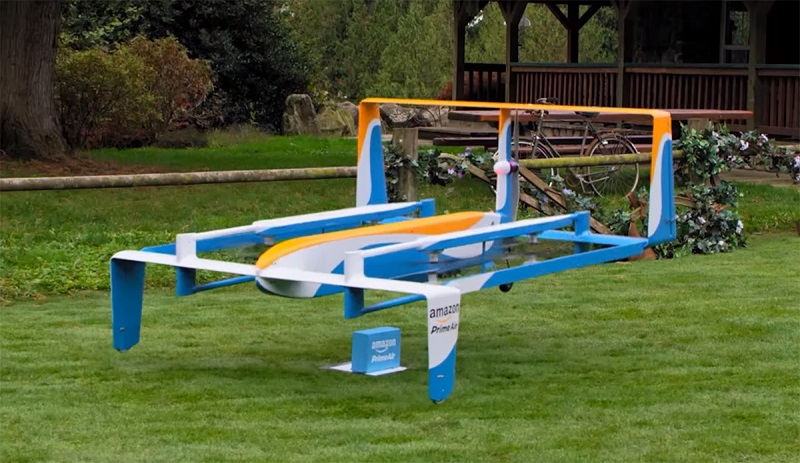Amazon flying warehouses
In December 2016, it came to light that the online retail giant Amazon had filed a patent for massive flying warehouses that could be used to assist and house a fleet of delivery drones.
Originally filed in 2014, the patent refers to the warehouses as ‘airborne fulfilment centres’ (AFCs) kept aloft by airships.
Although Amazon has refused to comment on the patent, the details involve AFCs being stationed above major cities, storing items for rapid delivery at peak times. Drones dispatched from the AFCs would glide downwards to a user-specified delivery location rather than fly, using little-to-no power. The drones are said to be capable of cruising and hovering at altitudes of up to 14,000 m (45,000 ft).
A series of ‘shuttles’ are also mentioned in the patent. It is thought that these would replenish the larger AFCs with stock and fuel, or provide transit for workers.
Areas where lots of merchandise is sold but there is difficult access, such as sporting arenas or music festivals, are highlighted as being places where AFCs could be of most use.
Despite Amazon being reluctant to comment, it has been widely reported that they are developing delivery drone capabilities. A video released in 2015 showed the latest versions of their flying robots undergoing testing. Packages weighing up to 2.2 kg (5 lb) were reported as being deliverable in 30 minutes using drones capable of travelling up to 15 miles.
[edit] Find out more
[edit] Related articles on Designing Buildings Wiki
Featured articles and news
Amendment to the GB Energy Bill welcomed by ECA
Move prevents nationally-owned energy company from investing in solar panels produced by modern slavery.
Gregor Harvie argues that AI is state-sanctioned theft of IP.
Heat pumps, vehicle chargers and heating appliances must be sold with smart functionality.
Experimental AI housing target help for councils
Experimental AI could help councils meet housing targets by digitising records.
New-style degrees set for reformed ARB accreditation
Following the ARB Tomorrow's Architects competency outcomes for Architects.
BSRIA Occupant Wellbeing survey BOW
Occupant satisfaction and wellbeing tool inc. physical environment, indoor facilities, functionality and accessibility.
Preserving, waterproofing and decorating buildings.
Many resources for visitors aswell as new features for members.
Using technology to empower communities
The Community data platform; capturing the DNA of a place and fostering participation, for better design.
Heat pump and wind turbine sound calculations for PDRs
MCS publish updated sound calculation standards for permitted development installations.
Homes England creates largest housing-led site in the North
Successful, 34 hectare land acquisition with the residential allocation now completed.
Scottish apprenticeship training proposals
General support although better accountability and transparency is sought.
The history of building regulations
A story of belated action in response to crisis.
Moisture, fire safety and emerging trends in living walls
How wet is your wall?
Current policy explained and newly published consultation by the UK and Welsh Governments.
British architecture 1919–39. Book review.
Conservation of listed prefabs in Moseley.
Energy industry calls for urgent reform.



























